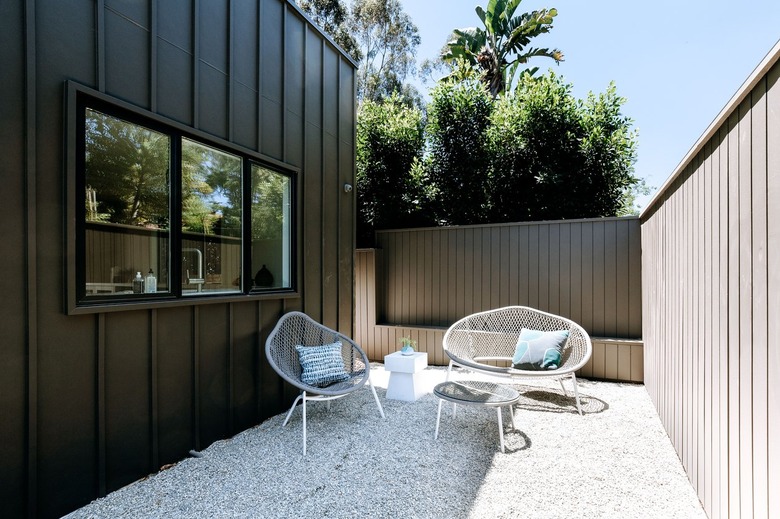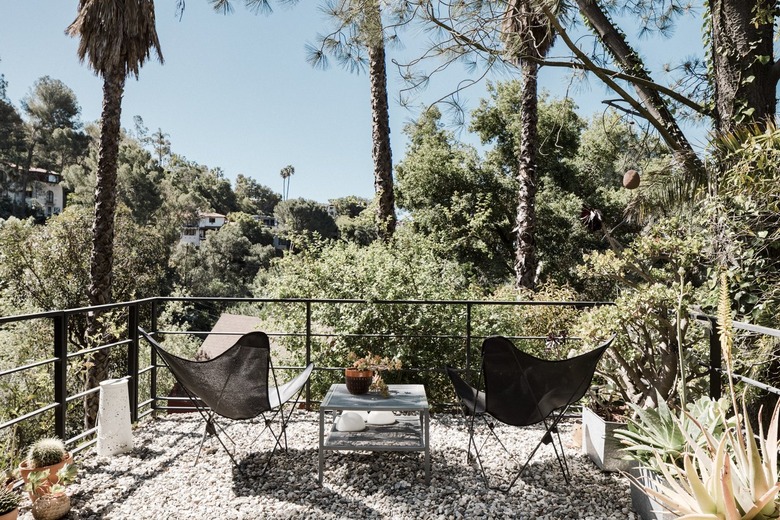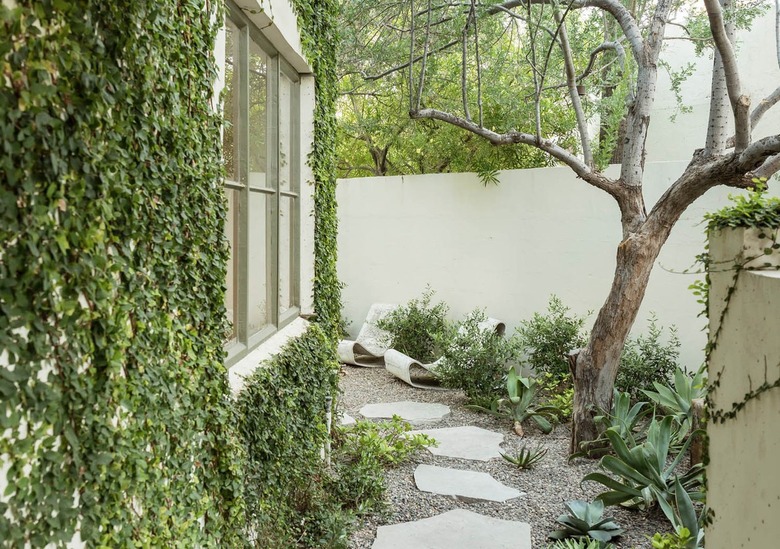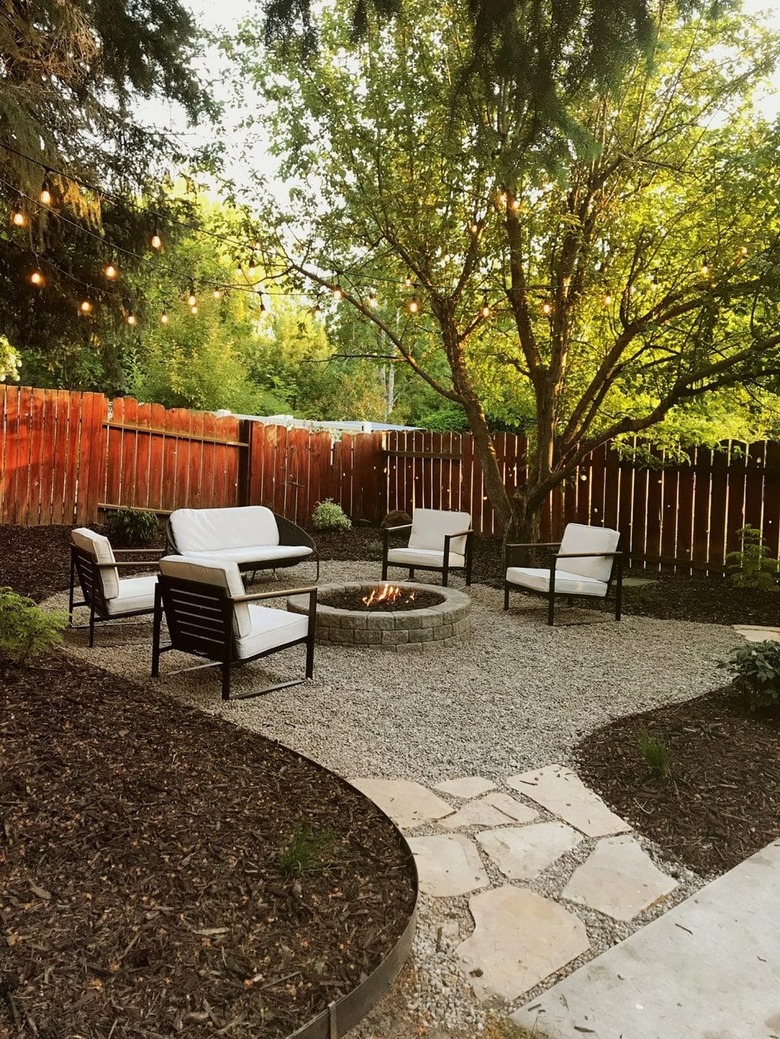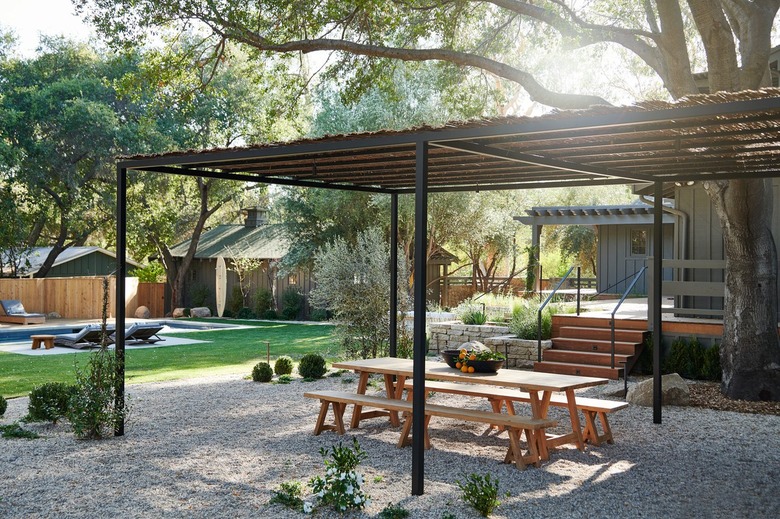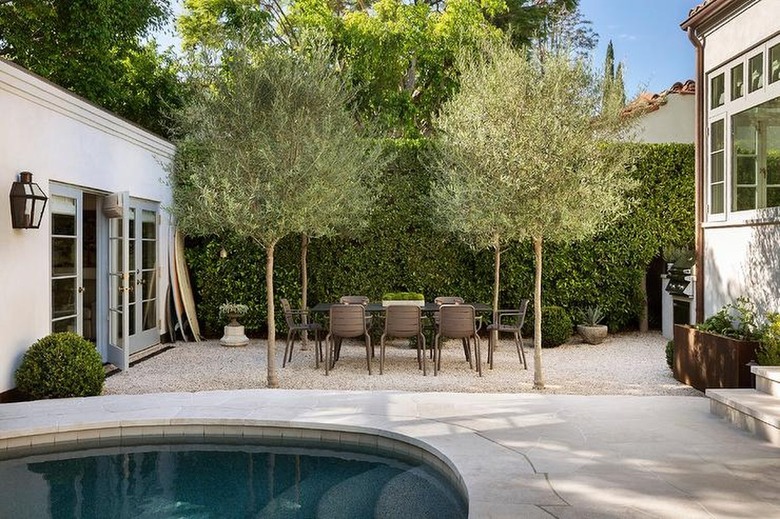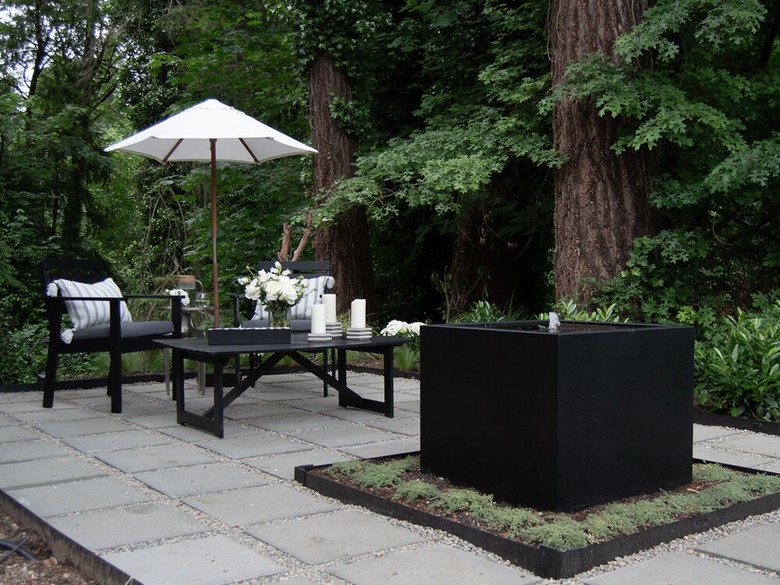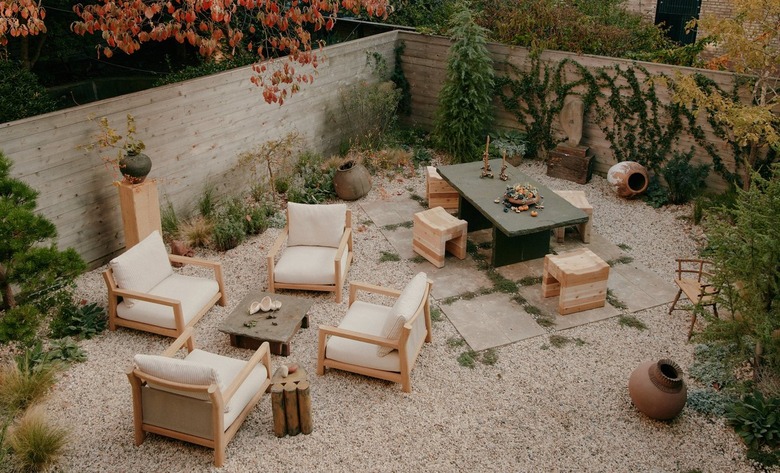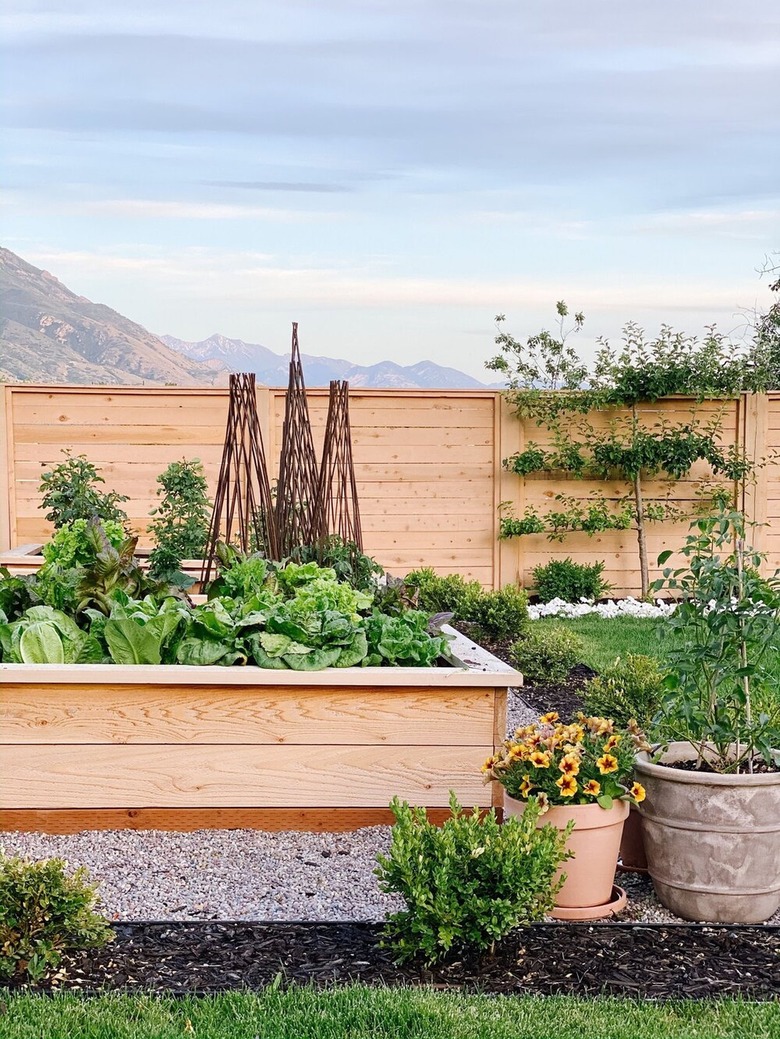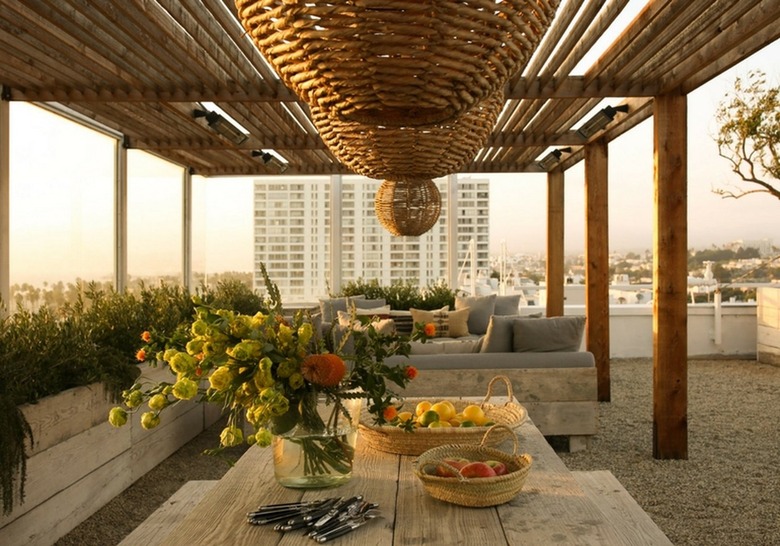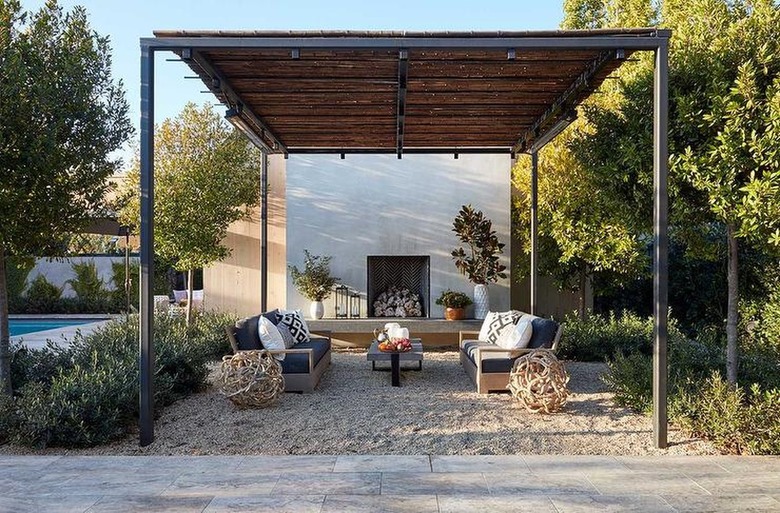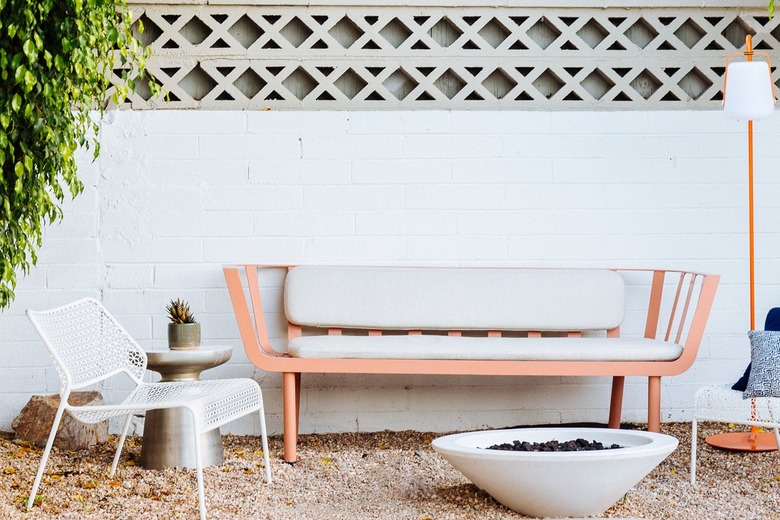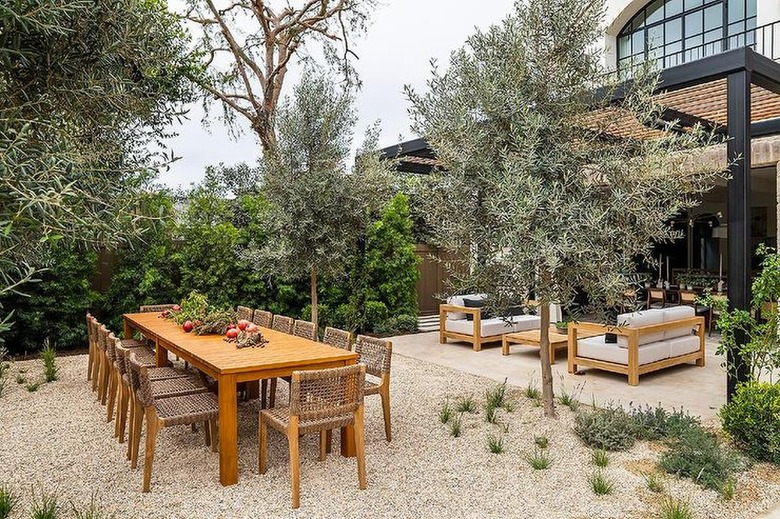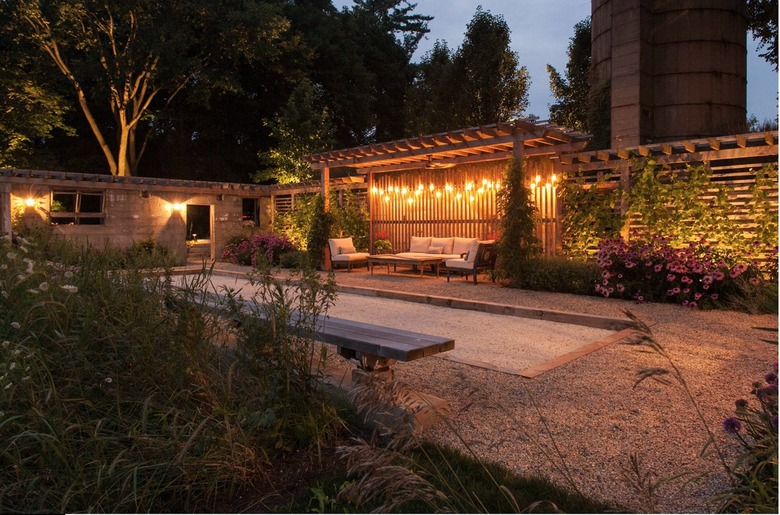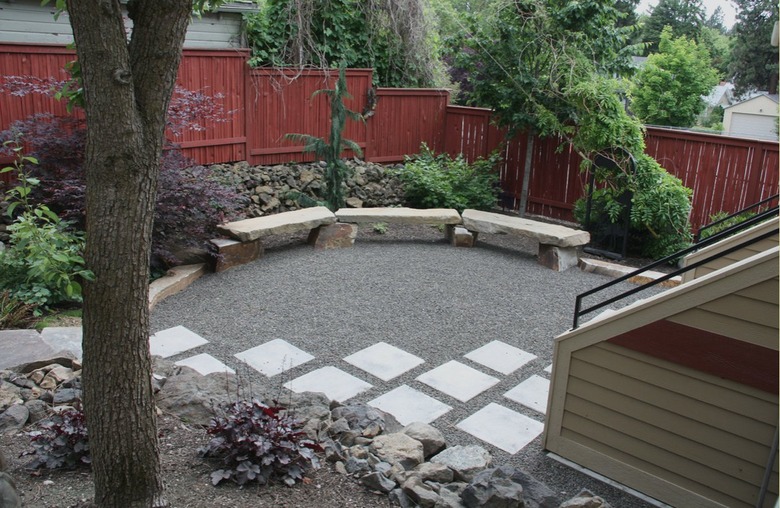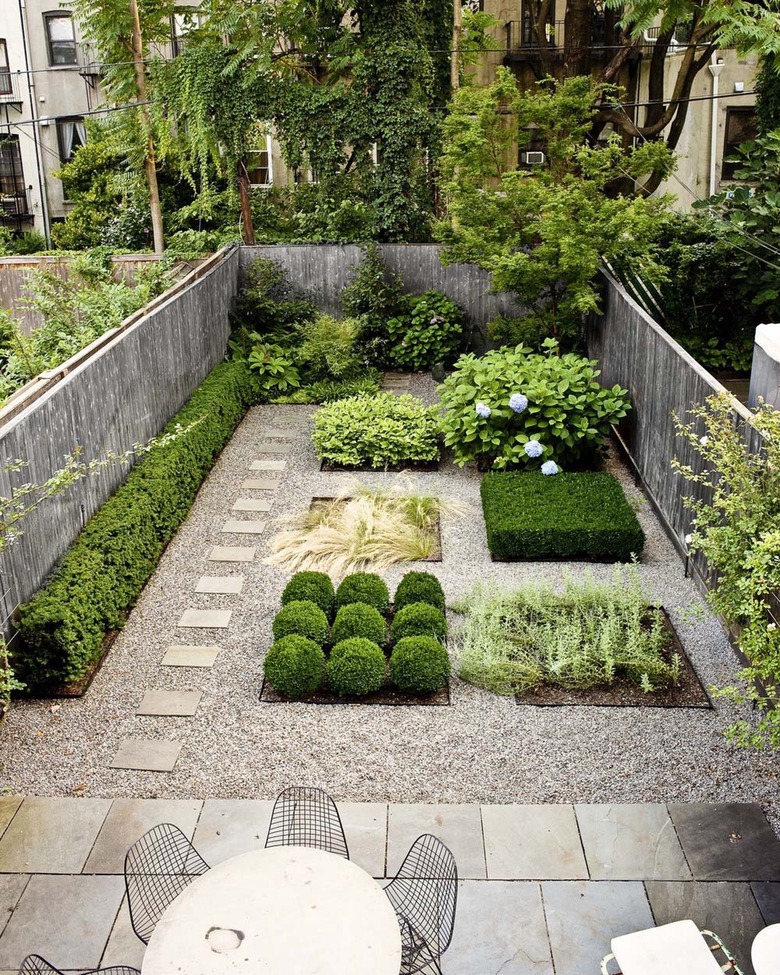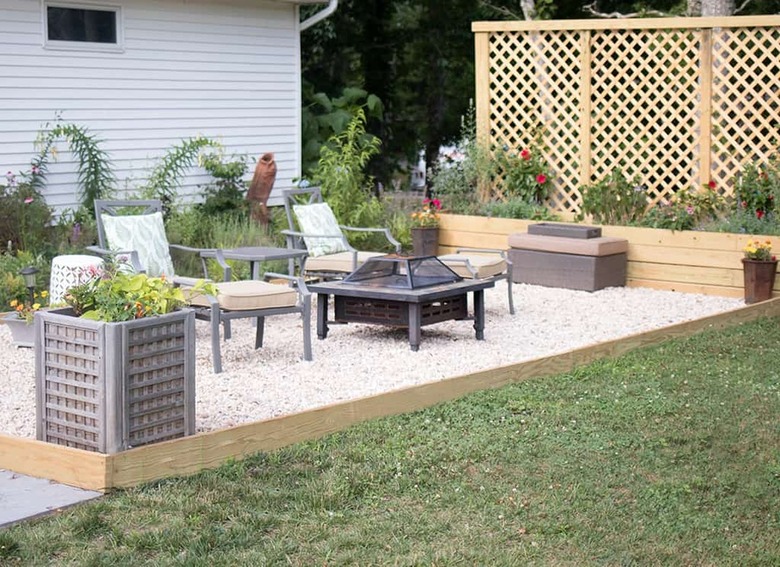16 Gravel Patio Ideas To Transform Your Backyard Into A Serene Oasis
Located at ground level in a homeowner's backyard, a patio is a paved surface that can be made from various materials including blue stone, brick, decomposed granite, poured concrete, and gravel. Depending on the size of your backyard, patios can be multifunctional and serve as a gathering spot for lounging and dining — or even an area to display your gardening prowess. Patios are distinguished by their open sides and lack of structure overhead, making them different from porches and courtyards.
Pea gravel is widely known as the best type of gravel for patio areas due to its size, round shape, and the fact that it's pretty low maintenance. It also comes in various colors — brown, gray, rust, gold, white — and is comprised of small stones or pebbles that are, you guessed it, roughly the size of peas. Typical sizes include 1/4-inch, 1/2-inch, and 5/8-inch diameters. Gravel's small size and rounded edges give way to weight, making them surprisingly comfortable to walk on, even with bare feet. The irregular edges on larger stones lock together, which prevents rocks from spilling outside the patio's edging.
Pros and Cons of Using Gravel
Pros and Cons of Using Gravel
Pea gravel is an enduring material with functional and aesthetic staying power — it's a timeless option that's been around for centuries and it's hardy enough to withstand various elements. Its ability to adapt to any environment makes gravel a fan favorite. Although it's most often associated with European and Mediterranean architecture, it looks equally fitting used in residential landscape design. This versatility also makes it easy to use pea gravel in conjunction with other hardscape materials.
The pebble-like material doesn't just have good looks on its side — it's considerably less expensive than other patio materials (roughly $10-$50 per ton) and it is so easy to install that it can be tackled as a DIY project. It's also permeable, enabling water to drain into the soil, which makes it an environmentally friendly choice, too. "Gravel is such a great material to use in the garden. I use it a lot when I want to replace turf in a shady area but still allow for a soft and natural look. Not only is it permeable (good for water runoff) it's [also] easy on the eyes," says Caroline Smukler, principal designer and owner of Caroline Francis. "It really is a very versatile material as there are many color combinations and it can be applied in a modern setting as well as more traditional landscapes."
Despite all that pea gravel has going for it, it's important to keep in mind a few of its drawbacks. Unlike other hardscape materials that are installed using cement, pea gravel is unstable and loose, making outdoor furniture placement a challenge. Avoid pieces with wheels or thin legs that will sink. "I usually specify an interlocking grid system underneath so that the gravel feels firm and when you are walking on it you don't sink in. According to one of my contractors, you can actually roll a suitcase across it," advises Smukler. "Another trick I use is to plant succulents or other hardy plant materials in the gravel to create a more natural environment." Additionally, gravel can be easily scattered by wind and leaf blowers, which can make your yard look messy. So if debris like leaves or dirt fall onto a pea gravel patio, it can be challenging to clean it up without displacing the stones. To prevent weeds from growing into your pea gravel patio, cover the ground with landscape fabric and top with at least four inches of gravel.
Now that we've piqued your interest in pea gravel and gone over the pros and cons, here are some design ideas worth considering for your own backyard makeover.
The 16 Best Gravel Patio Ideas
1. Tackle a DIY project.
DIY enthusiasts will welcome the manageability of a pea gravel patio install. Small-scale, low-fuss spaces like this one are prime for a hands-on project. Carpet the area with pea gravel, and then take inspiration from your surroundings. This lush spot only required a few potted plants and a pair of butterfly chairs.
2. Mark a path.
There's something about pea gravel that gives even the smallest spaces enchanted garden vibes. For instance, Green Room Collaborative made a stepping stone path out of irregularly shaped pavers to draw visitors to a pint-sized gravel patio, where a pair of sculptural Willy Ghul lounge chairs await.
3. Create an unusual patio shape.
Don't limit yourself by thinking a patio needs to be rectangular or square. One of the greatest benefits of selecting pea gravel for a yard is that its small shape and size are ideal for carving out non-linear spaces. For example, with the help of a few sandstone pavers, Chris and Julia used pea gravel to create a circular gathering spot replete with fire pit and lounge chairs.
4. Introduce shade with a pergola.
Beat the heat and make your patio a destination even when the sun is blazing by adding a freestanding patio cover. An open-air structure, like the one Alexander Design selected for this outdoor dining area, adds visual weight and helps ground the space from above.
5. Be strategic with plantings.
Unlike other hardscaping materials that cause runoff and water loss, pea gravel's porosity promotes water drainage and makes it possible to plant directly into it. This results in an unobstructed sightline and visual continuity not achievable with other materials. Elizabeth Dinkel placed a quad of lollipop olive trees on this patio to elegantly frame a dining area.
6. Inset cement pavers.
Pea gravel makes a practical and attractive alternative to cement grout. Opt for gravel that coordinates with larger pavers to create various patterns. In this garden, spotted on Savvy Heart, Terra opted for a modern look by laying pavers in straight lines for a modern, grid-like appearance. The furniture perched on top of the pavers also adds stability.
7. Install furnishings at an angle.
Pea gravel is a flexible base that supports a variety of furniture arrangements. Athena Calderone of Eyeswoon placed the outdoor furniture in her Mediterranean-style backyard on an angle which, although quite deliberate, imparts a casual vibe that imbues warmth and interest. Loose plantings give the space a less manicured look, which underscores the laidback aesthetic.
8. Flaunt container gardens.
Select pea gravel in a color that will highlight a beautiful garden feature. For instance, for this perfectly executed patio by Studio McGee, gray pebbles are used to create pleasing pathways between the wood-raised container gardens. The light-colored material provides a subtle backdrop, allowing the gardens to take center stage.
9. Create a laidback, beachy vibe.
When deciding what color, shape, and size pea gravel to go with for your patio, look to the surrounding environment for suggestions. For example, Alexander Design played up this patio's seaside proximity with the help of greige-colored gravel that's reminiscent of a sandy beach. Weathered furnishings and woven accessories enhance the welcoming, laidback feeling.
10. Incorporate an expansive fireplace.
Add definition to a patio that's carpeted in pea gravel with an expansive fireplace. The large design showcased in this outdoor living space by Tim Barber Architects effectively frames the seating area and anchors the airy setup.
11. Welcome a diminutive fire pit.
You don't need an oversize fireplace to add literal and figurative warmth to an outdoor space. Follow the lead of this small patio and opt for a fire pit instead. Here, the sand-colored gravel base adds subtle contrast against the white fire pit and side chairs, while the peachy sofa and floor lamp provide a playful dose of color.
12. Designate a dining area.
Selecting two different materials is a great way to define areas on your patio while also adding interest. For example, Brandon Architects opted for limestone pavers and pea gravel to designate an outdoor living room and adjacent, but separate, dining space. And bonus: Selecting gravel and pavers in the same color results in continuity and a cohesive finish.
13. Make room for yard games.
A patio can be much more than a place to lounge or dine. Dedicate an area where yard games, like bocce ball or cornhole, can take place, too. And if space allows, add a seating area with string lights like Greenhaven Landscapes did in this setup, so that spectators and cheerleaders alike can see the action up close.
14. Transform your patio into a meditation zone.
If you're looking to create a serene meditation-like garden, you can't go wrong with pea gravel. It has a satisfying crunch underfoot, plus its small shape and size can be raked for a relaxing experience. Just add a few concrete pavers and a bench (or three like Pacific Garden Design did in this soothing patio design) for a place to sit and take in the surroundings.
15. Showcase an artfully arranged garden.
An outdoor makeover that includes hardscaping and landscaping can be a real budget-buster, however, pea gravel's affordability can help considerably. Fill in the bulk of the yard with gravel, and then add softness and color with artistically arranged and carefully selected greenery as demonstrated in this sophisticated patio design by Foras Studio.
16. Keep it all in place with edging.
Despite all that pea gravel has going for it, one of its drawbacks is that it has a tendency to travel further than you want it to. Keep it contained by installing a low-height retaining wall or border around it. Garden edging is available in a variety of materials including plastic, corten steel, and mulch. Gina Michele chose wood edging for her patio which adds height, definition, and a hint of warmth to the outdoor space.
